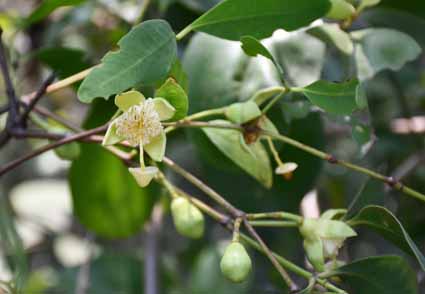Abstract
N/A
References
- Banks, J. (1800) Sonneratia apetala. In: Symes, M. (Ed.) An Account of an Embassy to the Kingdom of Ava, sent by the Governor-General of India, in the year 1795. W. Bulmer and Co. Cleveland-raw, St. James’s, London, pp. 477.
- Engler, A. (1897) Die natürlichen Pflanzenfamilien., Nachträge zum II–IV, Teil. Leipzig, pp. 261.
- IPNI (2023) International Plant Name Index. Available from: https://www.ipni.org (accessed: 28 June 2023).
- Linnaeus, C. (1754) Herbarium Amboinense. Upsaliæ, pp.13. https://doi.org/10.5962/bhl.title.78821
- Linnaeus filius, C. (1782) Supplementum plantarum systematis vegetabilium. Braunschweig, pp. 468.
- Naskar, S. (2015) Leaf epicuticular and pollen ultrastractural comparisons of Sonneratia apetala Buch.-Ham. and S. caseolaris (L.) Engler (Sonneratiaceae). Modern Phytomorphology 7: 47–53.
- Ren, H., Lu, H., Shen, W., Huang, C., Guo, Q., Li, Z. & Jian, S. (2009) Sonneratia apetala Buch.Ham in the mangrove ecosystems of China: An invasive species or restoration species? Ecological Engineering 35: 1243–1248. https://doi.org/10.1016/j.ecoleng.2009.05.008
- Rumphius, G.E. (1743) Herbarium Amboinense, Pars Tertia. Amstelaedami, Hagae Comitis, Ultrajecti.
- Sengupta, S., Abhinav, N., Singh, S., Dutta, J., Mabalirajan, U., Kaliyamurthy, K., Mukherjee, P.K., Jaisankar, P. & Bandyopadhyay, A. (2022) Standardised Sonneratia apetala Buch.-Ham. fruit extract inhibits human neutrophil elastase and attenuates elastase-induced lung injury in mice. Frontiers in Pharmacology 13: 1011216. https://doi.org/10.3389/fphar.2022.1011216
- Smith, J.E. (1819) The cyclopædia, or, Universal Dictionary of Arts, Science, and Literature. Longman, Hurst, Rees, Orms, & Brown, London, pp. 33.
- Symes, M. (1800) An Account of an Embassy to the Kingdom of Ava, sent by the Governor-General of India, in the year 1795. W. Bulmer and Co. Cleveland-raw, St. James’s, London.
- Tomlinson, P.B. (2016) The Botany of Mangroves, second edition. Cambridge University Press, Cambridge. https://doi.org/10.1017/CBO9781139946575
- Turland, N.J., Wiersema, J.H, Barrie, F.R., Greuter, W., Hawksworth, D.L., Hereunder, P.S., Knapp, S., Kusber, W.-H., Li, D.-Z., Marhold, K., May, T.W., McNeill, J., Monro, A.M., Prado, J., Price, M.J. & Smith, G.F. (2018) International code of Nomenclature for algae, fungi and plants (Shenzhen code). Regnum Vegetabile 159. Koeltz Botanical Books, Glashütten, 254 pp. https://doi.org/10.12705/Code.2018
- Watson, M.F. & Noltie (2016) Career, collections, reports and publications of Dr Francis Buchanan (later Hamilton), 1762–1829: natural history studies in Nepal, Burma (Myanmar), Bangladesh and India. Part 1. Annals of Science 73: 392–242. https://doi.org/10.1080/00033790.2016.1195446
- Xin, K., Zhou, Q., Arndt, S.K. & Yang, X. (2013) Invasive capacity of the mangrove Sonneratia apetala in Hainan island, China. Journal of Tropical Forest Science 25: 70–78.


